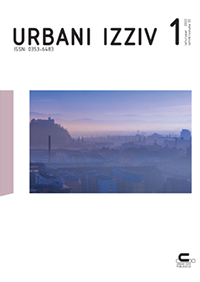A spatial analysis of public transport accessibility in Slovenia
A spatial analysis of public transport accessibility in Slovenia
Author(s): Jernej Tiran, Nika Razpotnik Visković, Matej Gabrovec, Simon KoblarSubject(s): Rural and urban sociology, Transport / Logistics
Published by: Urbanistični inštitut Republike Slovenije
Keywords: accessibility; mobility; public transport; settlement; spatial planning;
Summary/Abstract: This article analyses the accessibility of public transport in Slovenia in terms of the proximity of stops and trip frequency. By combining the Central Population Register with data on the provision of public transport services, geographic information systems were used to calculate the share of the population living within a 500 and 1,000 m radius from stops with a basic number of daily trips. The spatial differences in accessibility were analysed, and the population density data were utilized to identify the main gaps in provision. Moreover, the location of newer settlements was analysed in terms of their integration into the existing public transport network. It was determined that public transport accessibility in the country is relatively adequate within a 1,000 m radius; however, within a 500 m radius, it is adequate only in most urban areas. There are extensive areas without adequate accessibility, which is a consequence of low population density particularly in the countryside, whereas larger gaps in provision appear in suburban areas that have grown outside public transport corridors. The 2004–2020 study period revealed a trend of lower demographic growth than the Slovenian average in areas with the best public transport accessibility, whereas the areas of the greatest population growth and most intense residential construction have been only partly located in the vicinity of the public transport network. This confirms the hypothesis that current strategic spatial planning documents are not followed consistently, and that transport and spatial planning are insufficiently integrated.
Journal: Urbani izziv
- Issue Year: 33/2022
- Issue No: 1
- Page Range: 105-121
- Page Count: 17
- Language: English

